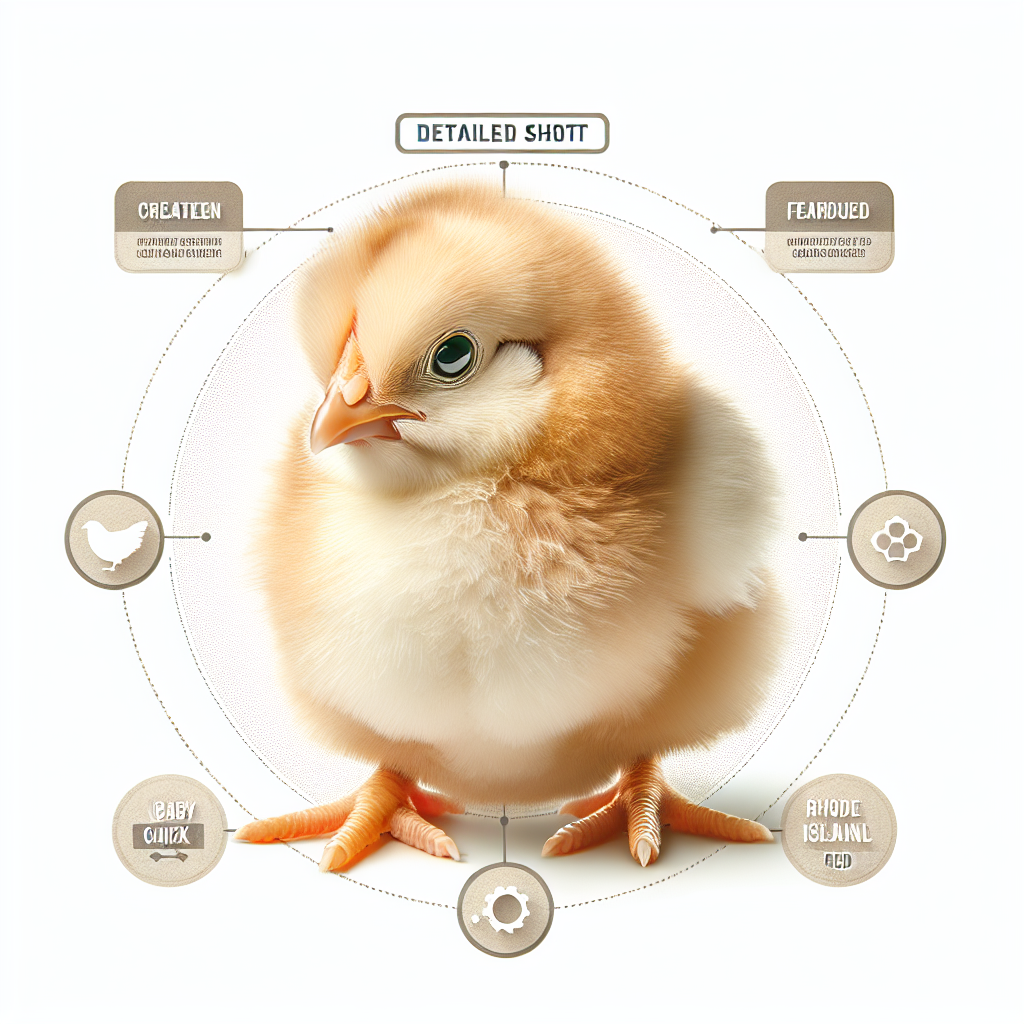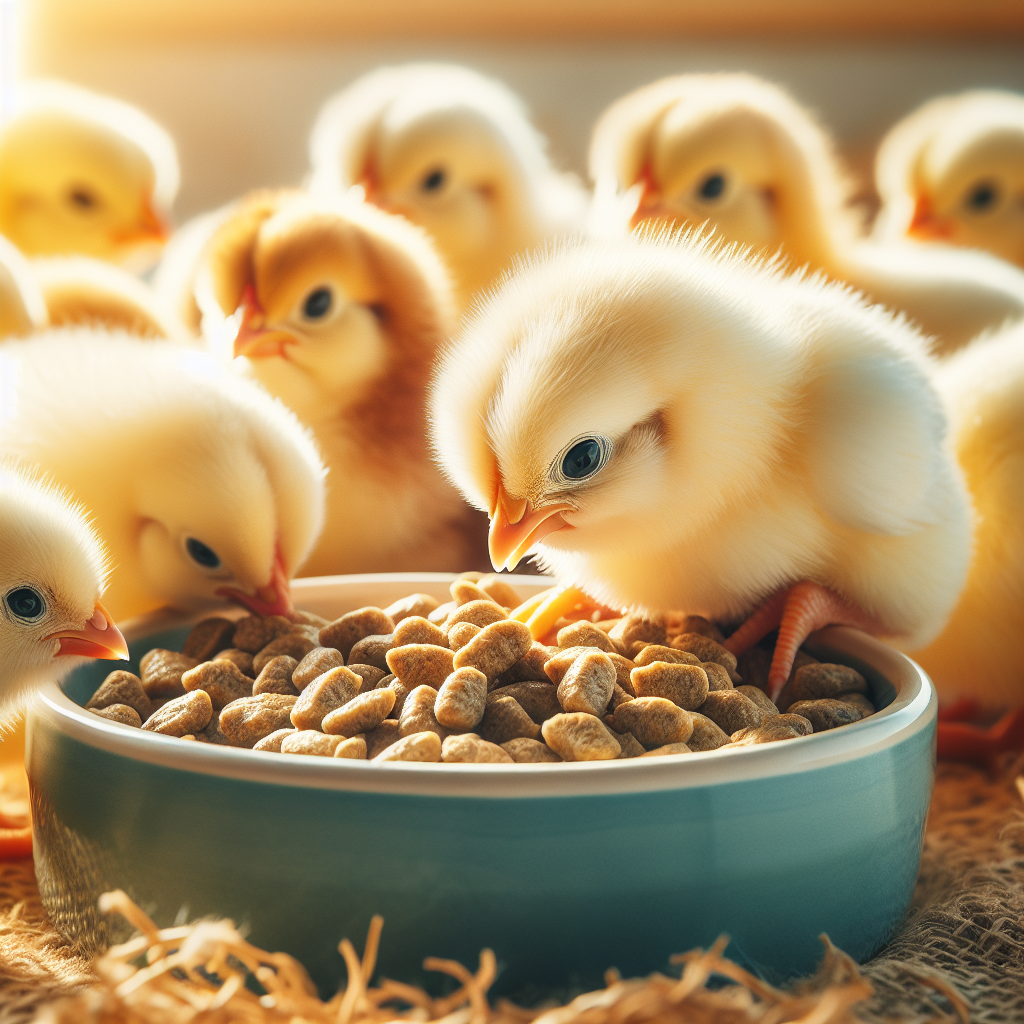Are you wondering how to keep a close eye on humidity levels while caring for young chicks? Maintaining the optimal humidity during the brooding stage is crucial for the health and growth of your feathered friends. In this article, we will guide you through the steps of monitoring and maintaining humidity levels during brooding, ensuring a comfortable and safe environment for your young flock. So let’s dive right in and discover the best practices to create the ideal conditions for their early development.
Understanding the Importance of Monitoring and Maintaining Humidity Levels
Brooding is a crucial stage in the growth and development of chicks, and humidity plays a vital role in ensuring their health and well-being. As a poultry farmer, it is essential to understand the importance of monitoring and maintaining appropriate humidity levels in the brooding environment. This article will guide you through the significance of humidity in brooding, how to effectively monitor and maintain humidity levels, and provide tips to avoid common mistakes in humidity control.
Why Humidity is Critical in Brooding
Humidity is critical in brooding because it directly influences the chick’s growth, health, and overall viability. During the initial days after hatching, when chicks are unable to regulate their body temperature adequately, they depend on the environmental humidity to maintain their thermal comfort. Insufficient humidity can lead to dehydration, stunted growth, weakened immune systems, and even mortality. Conversely, excessive humidity can result in the development of respiratory problems, such as bacterial and fungal infections. Therefore, maintaining optimal humidity levels is essential to ensure the best possible conditions for the chicks’ growth and development.
Effect of Humidity on Chick Development
Humidity plays a significant role in the development of chicks. Optimal humidity levels contribute to the proper growth of their feathers, as it helps to keep them moist and prevents them from becoming dry and brittle. Adequate humidity also promotes respiratory health by keeping the airways hydrated, reducing the risk of respiratory issues. Furthermore, the right humidity levels enhance the absorption of nutrients through the chick’s intestinal tract, aiding in their overall digestion and growth. Proper humidity is a key factor that directly impacts the chicks’ overall well-being and productivity.
Ideal Humidity Levels for Brooding
The ideal humidity levels for brooding depend on the stage of development the chicks are in. During the first week of brooding, when the chicks are most vulnerable, humidity levels should be maintained between 50% and 60%. As the chicks age and their feather growth progresses, humidity levels can be gradually reduced to around 40%. It is crucial to remember that humidity levels should be adjusted based on the chicks’ behavior and the humidity readings obtained from accurate monitoring devices. Monitoring and maintaining ideal humidity levels are crucial for providing the chicks with optimal conditions for their growth and development.
Monitoring Humidity Levels
To effectively monitor and maintain humidity levels during brooding, it is essential to use a reliable hygrometer. A hygrometer is a device specifically designed to measure the humidity in the air. By regularly checking and recording humidity levels, you can ensure that they remain within the desired range for the chicks’ health and development.
Using a Hygrometer
When selecting a hygrometer, opt for a high-quality, accurate, and easy-to-read device. Place the hygrometer in a location that is easily visible and accessible, allowing you to monitor and record humidity levels without difficulty. There are various types of hygrometers available, including analog and digital options. Choose the one that suits your preferences and budget, ensuring it provides reliable and precise readings.
Placing Hygrometer at Optimal Locations
To obtain accurate readings, it is crucial to place the hygrometer in optimal locations within the brooding area. The hygrometer should be positioned at chick level, as this is the most relevant location for monitoring their immediate environment. Avoid placing it near heat lamps or ventilation systems, as such areas may distort the humidity readings. By selecting appropriate locations for the hygrometer, you can ensure accurate humidity monitoring throughout the brooding period.
Regularly Checking and Recording Humidity Levels
Regularly checking and recording humidity levels is essential for effective humidity control. As a poultry farmer, you should establish a routine to check humidity levels at least twice a day. This will enable you to promptly identify any fluctuations or deviations from the desired range and take appropriate measures to address them. Keeping a record of your daily humidity readings will also help you monitor trends and patterns, allowing you to make informed decisions regarding humidity adjustments during the brooding process.
Maintaining Humidity Levels
Maintaining optimal humidity levels requires a proactive approach, ensuring that the brooding area is constantly providing the right balance of moisture for the chicks’ well-being. Here are some important methods to help you maintain ideal humidity levels throughout the brooding period.
Providing Adequate Ventilation
Proper ventilation is crucial for maintaining optimal humidity levels. It helps to remove excess moisture and prevent the build-up of stale air, which can lead to high humidity levels and poor air quality. Ensure that your brooding area is well-ventilated by using ventilation systems, such as fans or air circulation equipment. Regularly check these systems to make sure they are functioning correctly and efficiently. Good airflow and ventilation contribute to maintaining a healthy and comfortable environment for the chicks.
Raising Humidity with Water Pans or Containers
If the humidity levels in your brooding area are too low, you can raise them by using water pans or containers strategically placed around the space. Evaporating water from the pans increases the overall moisture in the air, raising humidity levels. However, it is crucial to monitor the humidity levels closely when using this method to avoid excessive humidity. Also, remember to regularly refill the water pans or containers to ensure a consistent and adequate source of moisture.
Using Humidifiers or Foggers
Humidifiers or foggers are effective tools for increasing humidity levels in the brooding area. These devices generate fine mist or vapor that adds moisture to the air, creating a more suitable environment for the chicks. Choose humidifiers or foggers that are specifically designed for agricultural or poultry use and follow the manufacturer’s instructions for optimal performance and safety. Regularly check the humidity levels and adjust the operation of the humidifiers or foggers accordingly to maintain the desired humidity range.
Preventing Condensation or Dampness
While it is important to maintain appropriate humidity levels, it is equally crucial to prevent condensation or excessive dampness in the brooding area. Excessive moisture can lead to wet bedding, which is unhealthy for the chicks and increases the risk of bacterial and fungal growth. To prevent condensation, make sure there is proper ventilation and airflow within the brooding area. Additionally, avoid using excessive water pans or overusing humidifiers or foggers, as these can contribute to excess moisture. Regularly monitor the brooding area for signs of condensation and take corrective measures promptly.
Addressing Low Humidity Levels
Low humidity levels can adversely affect chick development and overall health. Understanding the reasons behind low humidity and implementing appropriate measures can help you maintain the desired humidity range.
Reasons for Low Humidity
There are several reasons why the humidity levels in the brooding area may be low. It could be due to insufficient water pans or containers, inadequate ventilation, or excessively dry outside air. Additionally, environmental factors like low ambient humidity or extreme weather conditions can also play a role. Identifying the specific cause of low humidity in your brooding area will enable you to address the issue effectively.
Increasing Humidity with Water Pans or Wetting Floors
One way to address low humidity is by using additional water pans or wetting the floors in the brooding area. By adding more water sources, you can increase the overall moisture content in the air, helping to raise the humidity levels. Wetting the floors with appropriate amounts of water can also contribute to maintaining higher humidity. However, closely monitor the humidity levels with a hygrometer to avoid excessive humidity that could be detrimental to the chicks’ health.
Using Humidifiers or Foggers
Another effective method to address low humidity is by using humidifiers or foggers. These devices can help raise humidity levels quickly and efficiently. The fine mist or vapor generated by the humidifiers or foggers adds moisture to the brooding area, creating a more suitable environment for the chicks. As with any humidity adjustment method, monitoring humidity readings is key to ensure proper levels are consistently maintained.
Covering Floors with Plastic or Tarp
Covering the floors with plastic or a tarp can also help increase humidity levels in the brooding area. This method helps minimize moisture loss through the floor, thereby increasing overall humidity. Ensure that the covering is clean, well-maintained, and not causing any safety hazards for the chicks. Remember to adjust and monitor humidity levels carefully when using this method to avoid excessive moisture accumulation.
Dealing with High Humidity Levels
High humidity levels can pose significant challenges for the health and development of chicks. Understanding the reasons behind high humidity and implementing appropriate measures can help you maintain the desired humidity range.
Reasons for High Humidity
Several factors can contribute to high humidity levels in the brooding area, including inadequate ventilation, excessive water pans or wetting, or ambient humidity. Poor airflow and ventilation can lead to moisture build-up, resulting in high humidity. Additionally, overuse or excessive water content from pans, wetting floors, or humidifiers can contribute to elevated humidity levels. Identifying and addressing the specific cause of high humidity is crucial for maintaining a healthy brooding environment.
Improving Ventilation with Fans or Air Circulation
Improving ventilation is key to reducing high humidity levels. Proper airflow and ventilation help remove excessive moisture and provide a more comfortable environment for the chicks. Install fans or air circulation equipment strategically to facilitate better air movement within the brooding area. Regularly check the ventilation systems to ensure they are functioning efficiently and effectively. Enhancing ventilation is an essential step in controlling high humidity levels and maintaining optimal conditions for the chicks.
Using Dehumidifiers or Ventilation Systems
In cases where ventilation alone is insufficient to lower high humidity levels, using dehumidifiers or ventilation systems designed specifically for poultry farming can be beneficial. Dehumidifiers help extract excess moisture from the air, effectively reducing humidity levels. Ventilation systems with humidity control capabilities can also assist in regulating humidity more precisely. Select the most appropriate option based on the size of your brooding area, the severity of the humidity issue, and the manufacturer’s guidelines.
Controlling Temperatures to Reduce Humidity
Temperature and humidity are closely linked. Higher temperatures can lead to increased evaporation, raising humidity levels. By effectively controlling temperatures within the brooding area, you can indirectly manage humidity levels. Ensure that heating and cooling systems are operating correctly and maintaining the desired temperature range. Keeping temperatures at appropriate levels will help prevent excessive moisture build-up and control humidity effectively.
Humidity Adjustments for Different Brooding Stages
The humidity requirements of chicks vary depending on their developmental stages. Adapting humidity levels according to their needs is crucial for their growth and overall well-being.
Importance of Stage-specific Humidity
Different stages of brooding require different humidity levels to provide optimal conditions for the chicks’ growth and development. During the first week after hatching, when the chicks are most vulnerable, higher humidity levels between 50% and 60% are recommended. This higher humidity helps support their feather development and maintains appropriate moisture levels for their comfort. As the chicks grow and develop their feathers, the humidity levels can gradually be reduced to around 40% over the subsequent weeks.
Recommended Humidity Levels for Different Stages
For optimal results, it is important to adjust humidity levels based on the specific brooding stage. In the first week, humidity should be maintained between 50% and 60%. From the second week until the chicks are ready for transfer or relocation, gradually reduce the humidity by around 5% each week until reaching the desired 40% level. Monitoring and adjusting humidity levels according to the chicks’ requirements will ensure their optimal growth and development.
Gradually Adjusting Humidity as the Chicks Grow
Gradually adjusting humidity levels as the chicks grow is crucial for their adaptation and development. Sudden changes in humidity can be stressful for the chicks and result in health issues. Aim to make small, incremental adjustments to humidity levels, allowing the chicks time to acclimate. Regularly monitor their behavior, observing signs of comfort or distress, to determine if further adjustments are necessary. By gradually adjusting humidity levels, you provide a smooth transition for the chicks and maintain their well-being throughout the brooding process.
Avoiding Common Mistakes in Humidity Control
To effectively control humidity, it is essential to avoid common mistakes that may compromise the chicks’ health and development.
Overlooked Ventilation Issues
Ventilation is a critical aspect of humidity control, but it is often overlooked. Inadequate ventilation can lead to excessive moisture build-up and high humidity levels. Regularly inspect and maintain ventilation systems, ensuring proper air circulation and effective moisture removal. Address any ventilation issues promptly to prevent potential problems associated with inadequate airflow.
Neglecting Daily Humidity Monitoring
Neglecting daily humidity monitoring can significantly impact the success of brooding. Regularly checking and recording humidity levels is essential for identifying fluctuations or deviations and implementing necessary adjustments. Maintain a consistent monitoring routine, and don’t underestimate the importance of accurate and reliable hygrometers. Committing to diligent monitoring will contribute to better humidity control and ultimately lead to healthier and more productive chicks.
Improper Use of Humidifiers or Wetting Equipment
Improper use of humidifiers or wetting equipment can lead to excessive humidity or dampness, posing risks to the chicks’ health. Follow the manufacturer’s instructions carefully when using these devices. Determine the appropriate amount of water or moisture to add to the brooding area and adjust accordingly based on humidity readings. Improper use of humidifiers or wetting equipment can result in an imbalance in humidity levels and compromise the chicks’ well-being.
Important Tips for Effective Humidity Control
Effectively controlling humidity in the brooding environment requires attention to detail and diligent maintenance. Implement the following tips to ensure successful humidity control throughout the brooding process.
Maintaining a Clean and Dry Brooding Area
A clean and dry brooding area is crucial for effective humidity control. Regularly clean and disinfect the brooding area, removing any waste, debris, or spilled water that may contribute to excessive moisture. Keep the bedding material clean and dry, replacing it promptly if it becomes wet or damp. A clean and dry brooding area minimizes the risk of bacterial or fungal growth and maintains a healthy environment for the chicks.
Ensuring Proper Airflow and Ventilation
Proper airflow and ventilation are essential for humidity control. Regularly inspect and maintain ventilation systems, ensuring that they are functioning optimally. Make sure there are no obstructions to the airflow, such as blocked vents or excessive clutter. Good circulation of fresh air helps maintain suitable humidity levels and promotes overall chick health. Regularly check the brooding area for signs of poor ventilation or stagnant air and take appropriate measures to address these issues promptly.
Regularly Monitoring and Adjusting Humidity Levels
Consistently monitoring and adjusting humidity levels is key to successful brooding. Follow a daily routine of checking humidity with a reliable hygrometer at least twice a day. Record the readings and refer to them when making adjustments. When necessary, implement gradual changes to humidity levels based on the chicks’ development and specific stage requirements. Regular monitoring and adjustment will ensure that the chicks are provided with the ideal conditions for their growth and development.
The Role of Bedding Material in Humidity Control
The choice of bedding material is crucial for effective humidity control in the brooding area. Different bedding materials have varying capabilities to retain or release moisture, which directly affects the humidity levels.
Choosing Appropriate Bedding Material
Select bedding materials that facilitate proper moisture absorption and release, ensuring a healthy brooding environment. Materials such as wood shavings, straw, or paper-based products are commonly used and offer good moisture management properties. Avoid materials that tend to retain excessive moisture, such as sawdust or materials with high water retention capacity. Choosing appropriate bedding materials is an essential factor in maintaining optimal humidity levels for the chicks.
Avoiding Bedding Materials that Retain Moisture
Bedding materials that retain moisture excessively can lead to high humidity and dampness in the brooding area. Excess moisture can create an unhealthy environment, promoting bacterial and fungal growth, and compromise the chicks’ health. Avoid bedding materials with high water retention capacity, as they can contribute to excessive humidity levels. Opt for bedding materials that strike a balance between moisture absorption and release, ensuring an optimal and comfortable brooding environment.
Replacing Wet or Damp Bedding Immediately
Wet or damp bedding not only contributes to high humidity levels but also poses health risks to the chicks. Replace wet or damp bedding immediately to prevent the growth of harmful bacteria or mold. Regularly inspect the brooding area for any signs of moisture accumulation in the bedding and take swift action to maintain a clean, dry, and healthy environment for the chicks. Promptly replacing wet or damp bedding is essential for effective humidity control and the chicks’ overall well-being.
Conclusion
Mastering humidity control is crucial for successful brooding and the health and development of your chicks. By understanding the importance of monitoring and maintaining optimal humidity levels, you can create a comfortable and conducive environment for their growth. Regularly monitoring humidity levels using a reliable hygrometer, maintaining appropriate ventilation, and employing humidity adjustment methods as necessary are key practices. Avoid common mistakes, follow important tips, and ensure proper bedding material to achieve effective humidity control. With these guidelines, you are well-equipped to provide your chicks with the best possible conditions, setting them up for a successful brooding period and ultimately a thriving poultry farm.




